Today, I will review two FrSky receivers, the mini D8 and the XSR ACCST. While the Micro Frsky D8 features PPM and SBUS, the FrSky XSR has S-Bus CPPM output.
For those who are new in the field, let me say a few words about radio receivers. Their main function is to interlink wirelessly the flight controller with the transmitter (remote controller). Additionally, they can offer also telemetry functions (signal strength, battery voltage). Radio receivers are used in a wide range of RC products, from Submarines to Drones.
Radio receivers can be categorized according to the protocol/brand, number of channels, and modulation. Most common radio receivers are with 6-8 channels (like the FrSky D8) or much more versatile ones with up to 16 – 24 channels (like the FrSky XSR). BTW, radio receivers can be separate modules or integrated into the flight controller.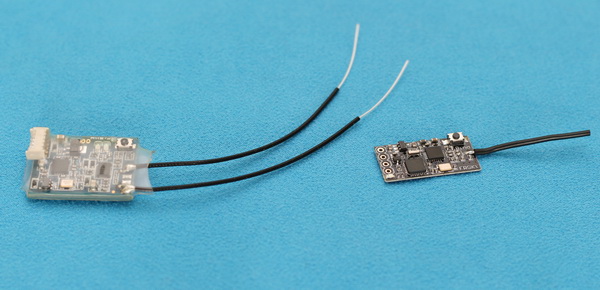
In addition to the above-listed modulations of the two FrSky receivers, you can also find PWM, DSM2, and DSMX receivers.
Review of FrSky receivers
A few weeks ago I was contacted by Shlemen from Banggood, if I would be interested in reviewing the FrSky Taranis Q X7. I said OK but I need also few FrSky receivers too because I don’t have any compatible ones. I checked their website, and I chose two.
1. FrSky D8 mini receiver
The D8 Mini is a very compact FrSky-compatible radio receiver. It supports two types of modulations. To make compatible my Eachine Tiny QX95 with my new transmitter I’m planning to replace the FlySky receiver with this mini FrSky receiver.
FrSky D8 features and specs
- Ultra lightweight, about 1g;
- 2.4G carrier frequency;
- 8 channels;
- PPM or S-Bus output (selectable with solder pads);
- Bind button;
- 5V operating voltage;
- 30mm wire antenna;
- Allows about 400 control range;
- 11 x 23 mm;
- Suitable for micro drones;
- Check price and availability here
Being very small, unfortunately, it does not have any telemetry feature nor firmware programing port (FTDI).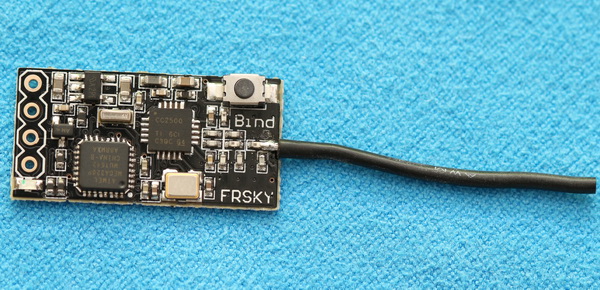
Before the binding you need to solder together the “SBUS” or the “PPM” pads (according to your desired transmission system). Frankly, I would have preferred some micro jumpers instead of the soldering approach.
The rest of the binding process is very simple. After you select “bind” on the TX, just power ON the D8 module while you press and hold the “Binding” button. If the binding was successful, the blue LED will always turn ON from fast blink.
2. FrSky XSR ACCST receiver
Compared to the Mini D8, the FrSky XSR featuring up to 16 channels (1-16CH on SBUS and 1-8CH on CPPM) is a much more versatile radio receiver.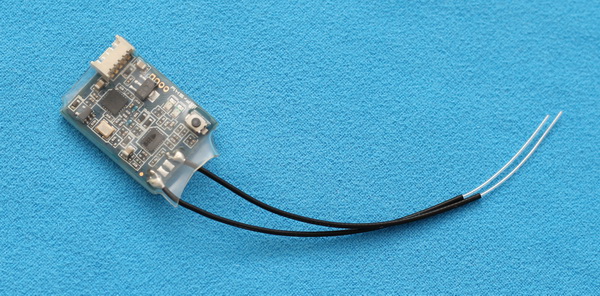
The XSR receiver is a compact and lighter weight version of the X4R receiver which is currently very popular among FPV drone pilots.
Like me, probably many others have the same question: “Is the Taranis Q X7 compatible with the FrSky XSR receiver?”. Searching on RCGroups, I found out that they luckily are. D16 is the “preferred” FrSky protocol. But both modules (RX and TX) must be in line with the same RF regulation (FCC or CE/EU LBT).
FrSky XSR features and specs
- Very lightweight, about 3.8g
- 2.4G carrier frequency;
- S-Bus and CPPM;
- Up to 16 channels;
- Bind button;
- Wide range of input voltage (4.0~10V);
- Dual antenna;
- Smart port for two-way full duplex transmission;
- Telemetry;
- Failsafe function for all channels;
- 26 x 19.2 mm;
- Suitable for mini drones;
- Check price and availability here
Binding procedure for the XSR receiver
After you wire the receiver with the flight controller, you need to pair the RX module with your existing transmitter (TX) prior to your flight.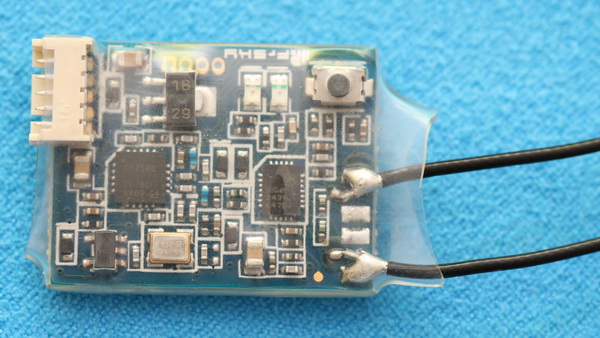
Firstly you need to set the transmitter to “D16” and select “Bind” option. Next step is to power ON the XSR module while you press and hold the “F/S” (failsafe) micro push button.
If binding was successful, the green LED on the FrSky XSR will start to flash on TX commands.
Note: While a transmitter can bound to multiple RX modules, receivers can bound to only one transmitter.
Final words
When it comes to multi-rotors, we all really like the FrSky radios. They come with tones of features, comfortable usage, nice price tag and last but not least are very reliable. Whether you choose the FrSky mini D8 or the much versatile FrSky XSR for your Taranis transmitter you can not fail.
Have fun and always fly safe!
Sponsored review

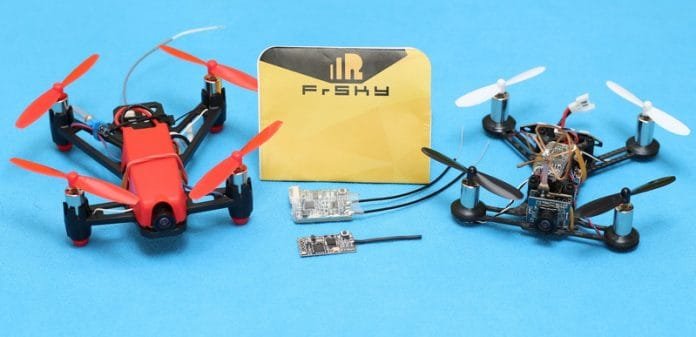
I’m planing to build my own FPV racer with F3 FC, which FrSky receiver would you recommend? I already ordered the frsky x9d plus TX….
I set the transmitter to “D16” and selected the “Bind” option then. powered ON the XSR module but it keeps shorting out! This is the 3rd one :(
I added the XSR to my QX95….works great! range is excellent